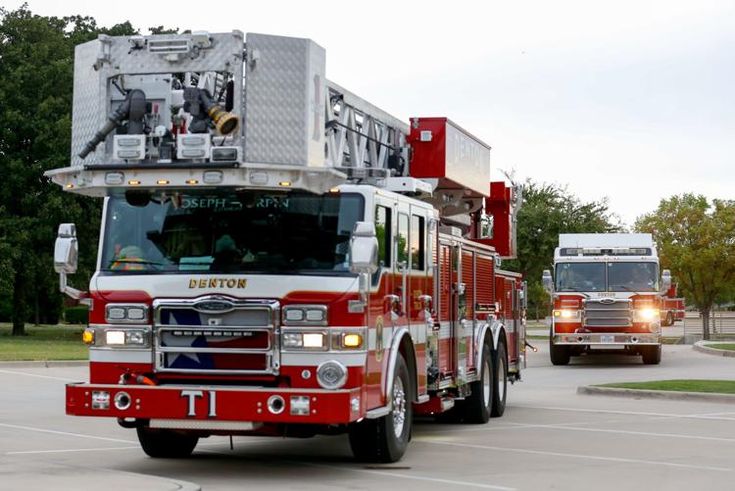- Admin
- Apr 07, 2025
- Government & Public Services
Highly Rated Fire Departments in Austin
Best OF Top 10 Fire Departments in Austin
When it comes to reliable Public Safety Services Austin, few agencies are as vital as fire departments. These frontline heroes are responsible not only for extinguishing fires but also for supporting Emergency Response Services Austin, conducting rescue operations, and promoting safety education. In Austin, the capital city of Texas, fire departments are deeply intertwined with the city’s Government Services Austin, playing an essential role in safeguarding both people and property. From urban downtown firehouses to suburban units, these departments collaborate with various Public Sector Agencies Austin to enhance quality of life and resilience.
In this article, we highlight the Top 10 Fire Departments in Austin, their operations, specialties, and how they contribute to essential Municipal Services Austin and Community Development Programs Austin.
Strengthening Austin Emergency Infrastructure Through Fire Services
Austin’s fire departments are essential pillars of the city’s Government Services Austin, combining rapid response with community-focused education and prevention. These stations collaborate with various Public Sector Agencies Austin to support both urban safety and long-term Infrastructure Development Services Austin, ensuring every neighborhood is equipped for fire-related emergencies and disaster preparedness.
Austin Fire Department Headquarters Leading Public Safety Services Austin
Located at 4201 Ed Bluestein Blvd, the Austin Fire Department (AFD) Headquarters is the central command hub for citywide fire operations. It oversees more than 45 fire stations across the metro area and manages services like fire suppression, hazmat response, and technical rescues. As a key partner in Public Administration Services Austin, the headquarters ensures seamless coordination among district units and emergency teams.
In collaboration with Regulatory Agencies Austin and Urban Planning Organizations Austin, the department actively implements citywide fire codes, promotes fire-resistant infrastructure, and participates in city planning to reduce hazards. The HQ also oversees budget allocations and workforce planning with support from Government Contracting Firms Austin and City Council Offices Austin.
Station One Downtown’s Frontline Emergency Unit
Station One, located in downtown Austin, is one of the busiest units in the city. It responds to thousands of calls annually and is strategically placed near government buildings, businesses, and entertainment venues. This station provides robust Emergency Response Services Austin, supporting both fire suppression and EMS.
Because it’s in the heart of the city, Station One works closely with Public Transportation Services Austin, Postal And Courier Services Austin, and Government Grant Services Austin to respond to emergencies that involve both people and essential city infrastructure.
Station Twenty Two Sustainability and Innovation Leader
Located in the Mueller community, Station Twenty-Two is recognized for incorporating green building technologies and eco-friendly practices. The station is a leader in sustainability and works in alignment with Energy Conservation Programs Austin and Environmental Protection Agencies Austin.
This unit doesn’t just respond to emergencies—it educates the public on fire prevention through partnerships with Community Development Programs Austin and Parks And Recreation Services Austin. With a LEED-certified building and energy-efficient systems, it represents the future of fire service infrastructure.
Station Four North Austin’s Rapid Response Hub
Serving residential and commercial areas in North Austin, Station Four provides essential services to one of the city’s most populous districts. The station focuses on disaster readiness and building safety compliance, working in tandem with Infrastructure Development Services Austin and Housing And Urban Development Agencies Austin.
Station Four has also been involved in water rescue and hazardous materials responses, making it a key partner of Water Supply Services Austin and Public Utility Companies Austin.
Station Nine South Austin’s Community-Focused Force
Station Nine is not only an emergency response unit but also a vital player in community engagement. It organizes neighborhood fire drills, safety workshops, and CPR training, working closely with Social Welfare Organizations Austin and Citizen Support Services Austin.
The station also supports efforts in housing safety inspections and fire risk mitigation in collaboration with Municipal Services Austin and Public Works Departments Austin.
Station Eighteen Serving Industrial and Commercial Zones
Strategically located near Austin's industrial belt, Station Eighteen specializes in large-scale fire incidents involving warehouses, factories, and commercial hubs. It’s one of the few units trained to manage chemical and structural fire hazards in coordination with Regulatory Agencies Austin and Government Contracting Firms Austin.
This station plays a key role in ensuring compliance with safety regulations in public buildings, aiding Taxation And Revenue Services Austin with risk assessment procedures and inspections.
Station Thirty Five Partnering with Public Health Services Austin
One of Austin’s newer stations, Station Thirty-Five is fully equipped to respond to health-related emergencies, including fire-related injuries and smoke inhalation cases. It collaborates directly with Public Health Services Austin and supports mental wellness programs for firefighters and citizens.
It’s also home to Austin’s community paramedicine pilot program, which serves elderly and disabled residents—an initiative supported by Veteran Support Organizations Austin and Legal Aid Organizations Austin.
Station Seven Trusted by the Education Sector
Located near UT Austin and surrounding schools, Station Seven specializes in fire prevention education. This station regularly hosts safety seminars and fire extinguisher training for students, faculty, and staff. It actively works with Public Sector Agencies Austin to promote fire safety in educational institutions.
The station's close ties with Urban Planning Organizations Austin make it a vital stakeholder in developing fire-safe campuses and youth programs.
Station Sixteen Top Notch Disaster Relief Team
Station Sixteen leads emergency responses during weather events, floods, and wildfires in the Austin region. Its robust disaster readiness planning is carried out in partnership with Environmental Protection Agencies Austin and Waste Management Solutions Austin.
This unit’s mobile emergency response vehicles are essential for reaching remote or flooded areas and distributing resources, sometimes even in support of Postal And Courier Services Austin and Public Transportation Services Austin during disasters.
Station Twenty Four Fire Prevention Meets Technology
Station Twenty-Four is equipped with advanced fire detection, suppression technology, and AI-supported dispatch systems. The station collaborates with Austin’s smart city initiative, which includes working with City Council Offices Austin, Government Grant Services Austin, and Infrastructure Development Services Austin to test smart hydrant systems and heat-sensing drone technology.
Their innovations contribute not only to safer neighborhoods but also to operational efficiency, making them a pioneer in Austin’s modern fire strategy.
FAQs
1. What is the customer support number for the Austin Fire Department?
Call (512) 974-0130 for general inquiries and non-emergency support.
2. Who founded the Austin Fire Department?
The department was officially established by the City of Austin in 1841.
3. How many employees does the Austin Fire Department have?
There are over 1,200 uniformed and civilian employees as of 2024.
4. What is the average salary of a firefighter in Austin?
The average salary is approximately $65,000 per year, depending on rank and experience.
5. Where is the headquarters located?
AFD Headquarters is located at 4201 Ed Bluestein Blvd, Austin, TX 78721.
6. What services do the fire departments provide?
Fire suppression, emergency medical response, hazmat, rescue operations, and public education.
7. What are the major divisions in AFD?
Divisions include Operations, Fire Prevention, EMS, Special Operations, and Community Outreach.
8. Are there fire prevention programs available to the public?
Yes, departments conduct public seminars and offer in-home safety inspections.
9. Does the fire department collaborate with environmental agencies?
Yes, especially for wildfire response and hazardous materials cleanup.
10. Is sustainability part of fire department operations?
Several stations operate under Energy Conservation Programs Austin and utilize green building practices.
11. What technology is used in dispatch and fire detection?
AFD uses CAD systems, GPS vehicle tracking, and thermal imaging drones.
12. How are fire stations funded?
Funding comes from city budgets and Government Grant Services Austin.
13. Are there training centers in Austin?
Yes, including a full-scale Fire Academy with simulators and live-fire training grounds.
14. Do fire departments assist during citywide elections?
Yes, in collaboration with Elections And Voter Registration Services Austin for public safety at polling places.
15. How do departments support veterans?
By offering employment programs through Veteran Support Organizations Austin and mental health resources.
16. What is the role of fire departments in city planning?
They consult with Urban Planning Organizations Austin and Public Works Departments Austin on building safety.
17. Are departments involved in housing safety inspections?
Yes, especially in partnership with Housing And Urban Development Agencies Austin.
18. Do fire departments assist in utility-related emergencies?
Yes, often collaborating with Public Utility Companies Austin and Water Supply Services Austin.
19. How do fire departments promote citizen safety?
By offering resources via Citizen Support Services Austin and community workshops.
20. Are Austin fire stations connected to postal or courier safety?
Yes, especially during incidents at distribution hubs in collaboration with Postal And Courier Services Austin.




Share on